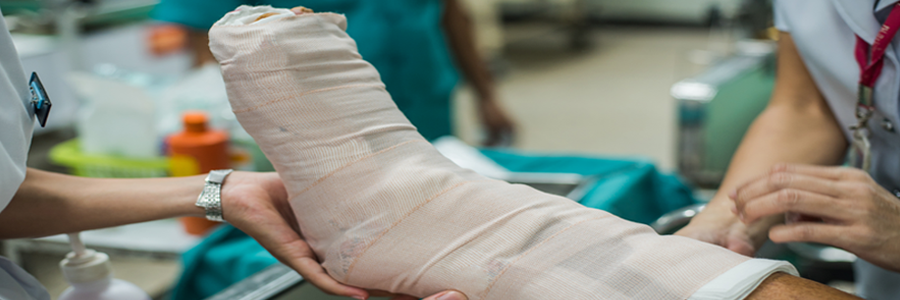Fracture Treatment in Jogeshwari

Fractures, commonly known as broken bones, are a frequent injury affecting people of all ages. Effective fracture treatment is crucial to ensure proper healing and prevent long-term complications. In this guide, we'll explore various fracture types, their treatments, and the latest advancements in the field. Find Here Fracture Treatment in Jogeshwari.
Understanding Fractures
Fractures occur when a bone is subjected to more force than it can withstand. They can be classified into several types based on their characteristics:
- Simple (Closed) Fracture: The bone breaks but does not pierce the skin.
- Compound (Open) Fracture: The bone breaks and pierces through the skin, posing a higher risk of infection.
- Transverse Fracture: The break is in a straight line across the bone.
- Oblique Fracture: The break has an angled pattern.
- Comminuted Fracture: The bone shatters into three or more pieces.
- Greenstick Fracture: An incomplete fracture where the bone bends, common in children.
Find Here Fracture Treatment in Jogeshwari
Symptoms of Fractures
- Severe pain
- Swelling and bruising
- Deformity or misalignment
- Inability to move the affected limb
- Hearing a snap or grinding noise at the time of injury
Initial Care for Fractures
Immediate first aid for fractures involves:
- Immobilization: Keeping the injured area still to prevent further damage.
- Ice Application: Reducing swelling and pain.
- Elevation: Elevating the injured limb above heart level to decrease swelling.
- Medical Attention: Seeking professional medical care promptly.
Diagnostic Techniques
Accurate diagnosis is essential for effective treatment. Common diagnostic methods include:
- X-rays: The most common imaging technique to view bone fractures.
- CT Scans: Provide detailed cross-sectional images of the bone and surrounding tissues.
- MRI Scans: Used to assess soft tissue damage around the fracture.
- Bone Scans: Helpful in detecting stress fractures or hidden fractures.
Find Here Fracture Treatment in Jogeshwari
Treatment Options
The treatment approach depends on the type, location, and severity of the fracture. Here are the primary treatment methods:
- 1. Casting and Splinting
For many fractures, especially simple and stable ones, immobilization with a cast or splint is sufficient. This helps keep the bone in the correct position while it heals. Casts are made from plaster or fiberglass, while splints are usually made from plastic or metal.
- 2. Traction
Traction involves using a steady pulling force to align the bones. It's typically used for fractures of the spine, pelvis, or long bones in the leg. Traction can be skin traction, where adhesive tapes and weights are used, or skeletal traction, where pins are inserted into the bone.
- 3. Surgery
Severe or complex fractures often require surgical intervention. Common surgical procedures include:
1) Internal Fixation: Using metal plates, screws, or rods to hold the bone fragments together.
2) External Fixation: Metal pins or screws are placed into the bone and connected to a metal frame outside the body to stabilize the fracture.
- 4. Functional Bracing
Functional bracing allows some controlled movement while keeping the fracture stable. It's often used for fractures of the forearm or lower leg.
Rehabilitation and Recovery
Post-treatment rehabilitation is crucial for restoring function and strength. It includes:
- Physical Therapy: Exercises to improve range of motion, strength, and flexibility.
- Occupational Therapy: Helps patients regain daily living skills.
- Pain Management: Medications and techniques to manage pain during recovery.
- Nutritional Support: Adequate calcium and vitamin D intake to support bone healing.
Find Here Fracture Treatment in Jogeshwari
Advances in Fracture Treatment
Modern medicine continues to advance, offering new and improved fracture treatment options:
- 1. Bone Growth Stimulators
These devices use electrical or ultrasound waves to stimulate bone growth and speed up the healing process. They are particularly beneficial for non-healing fractures.
- 2. 3D Printing Technology
3D printing is revolutionizing the creation of custom orthopedic implants, ensuring better fit and faster recovery. Personalized 3D-printed casts and splints are also becoming more common.
- 3. Biologic Therapies
Using biologic materials like bone grafts and stem cells can enhance healing, especially in complex fractures. These materials promote new bone growth and improve the healing environment.
Prevention of Fractures
- Bone Health: Ensure adequate calcium and vitamin D intake through diet or supplements.
- Exercise: Engage in weight-bearing exercises like walking, jogging, or resistance training to strengthen bones.
- Fall Prevention: Use assistive devices if needed, install grab bars in bathrooms, and ensure adequate lighting to reduce fall risks.
- Protective Gear: Wear appropriate protective gear during sports or high-risk activities
Find Here Fracture Treatment in Jogeshwari
